Understanding the STALA Search Cluster: What You Need to Know
My search cluster STALA refers to a specific group of schools within the Akron Public Schools redistricting proposal. If you're looking for quick information about this cluster, here's what you need to know:
| STALA Cluster Information | Details |
|---|---|
| Full Name | South Tallmadge Akron Learning Area (STALA) |
| Key Schools | Firestone Park Elementary, Pfeiffer Elementary |
| Proposed Changes | School closures including Firestone Park Elementary (est. 1919) |
| Timeline | Implementation planned for 2024-2025 school year |
| Community Meetings | Final meeting on Dec. 14 at East CLC auditorium |
| Feedback Deadline | January 7, 2024 (email: redistrictingquestions@apslearns.org) |
The STALA cluster is part of Akron Public Schools' broader redistricting efforts aimed at balancing enrollment, modernizing facilities, and addressing technological needs across the district. This has sparked significant community discussion, particularly around historic schools like Firestone Park Elementary, which has been a neighborhood anchor since 1919.
For families within the STALA cluster, these changes may mean new school assignments, different transportation arrangements, and adjustments to established community connections. The district has established an open enrollment window from January 29 to February 9 for families who wish to opt out of their assigned reassignment.
I'm Mortuary Cooler, a national-level supplier who understands the importance of community institutions and reliable infrastructure in my search cluster STALA discussions, having worked with community organizations to address facility planning needs across multiple sectors.
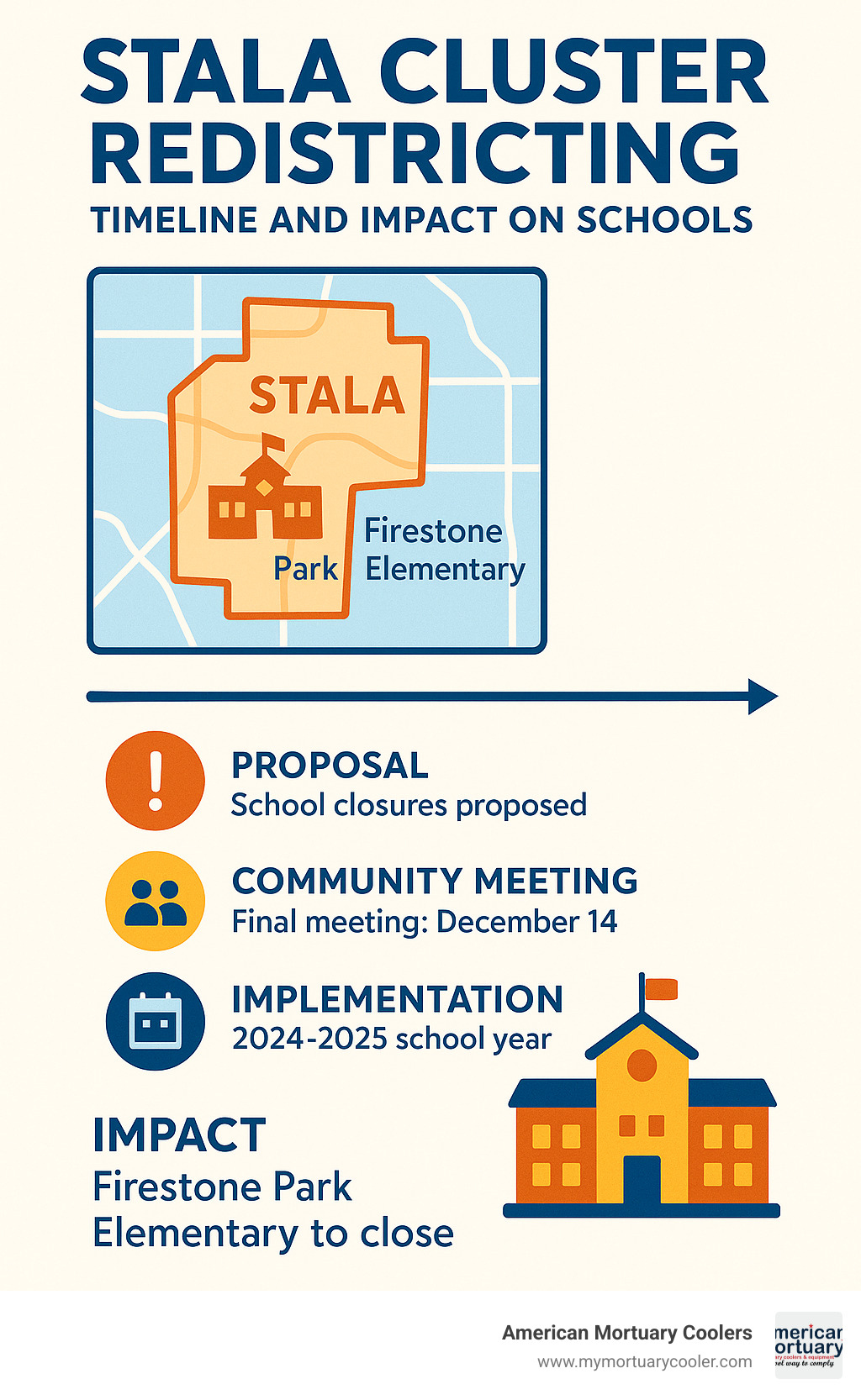
My search cluster STALA terms explained:
Why This Guide Matters
The redistricting of the My search cluster STALA isn't just about moving boundaries on a map—it represents a critical balancing act between education equity, technological modernization, and historic preservation. For families in South Tallmadge and surrounding Akron neighborhoods, these changes will reshape educational experiences for generations to come.
As specialists in custom infrastructure solutions at American Mortuary Coolers, we understand how important reliable, well-designed facilities are to community services. While our expertise is in mortuary coolers and equipment, we recognize the parallel concerns communities face when planning for the future while honoring the past—whether that's in funeral service facilities or educational institutions.
This guide aims to provide clear, factual information about the My search cluster STALA to help community members steer these changes and participate meaningfully in the decision-making process.
What the STALA Search Cluster Is & Why It Exists
If you've been hearing about My search cluster STALA in community discussions, you might be wondering what exactly this means for your neighborhood. STALA stands for South Tallmadge Akron Learning Area, and it's more than just letters on a map—it represents a community of schools that share geographic and administrative connections within Akron Public Schools.
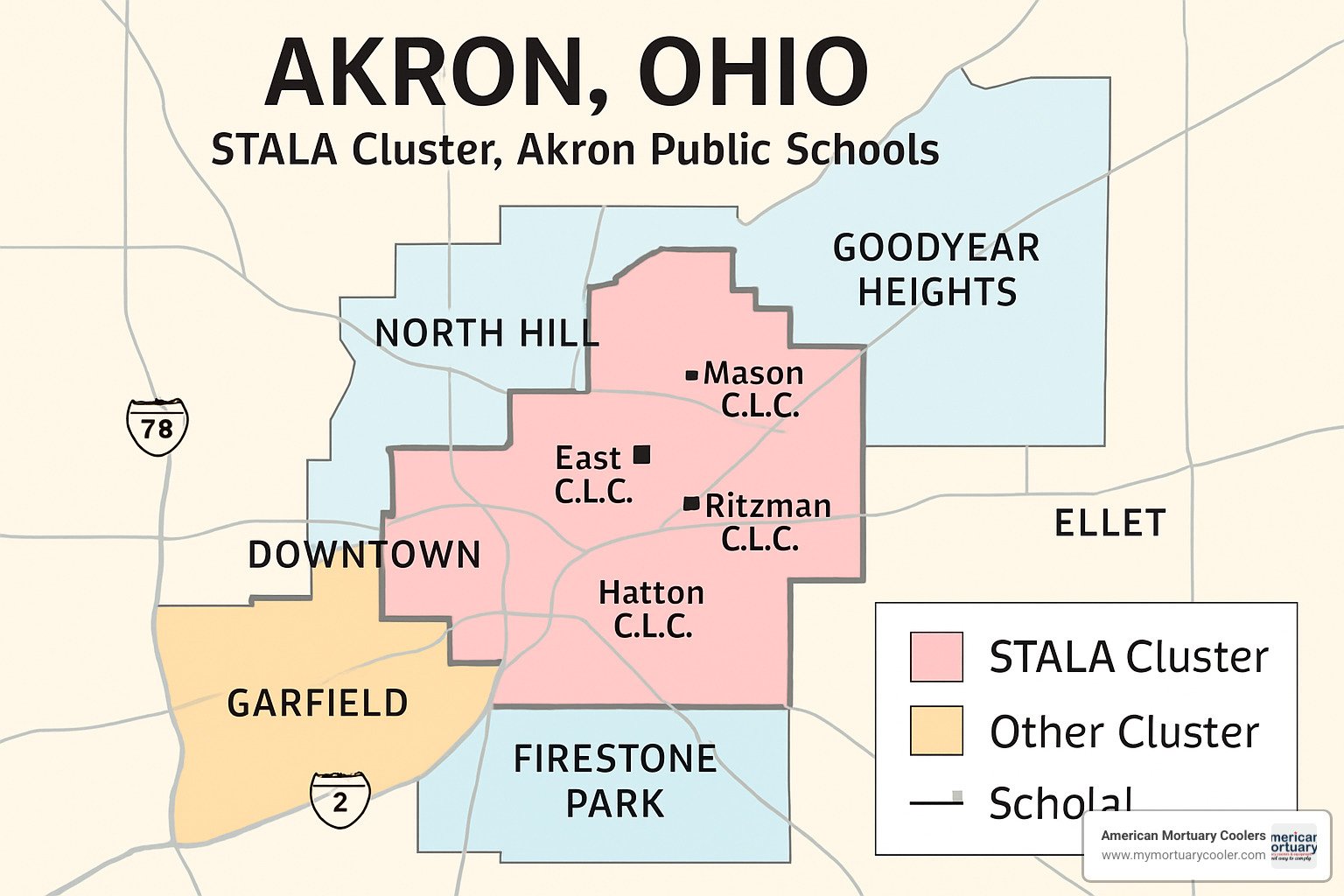
The My search cluster STALA sits right next to the Garfield cluster, with both areas facing significant changes in the coming years. These clusters weren't created randomly—they were carefully designed to nurture neighborhood-centered educational communities where children could learn close to home.
The roots of the STALA cluster run deep in Akron's industrial heritage. Parts of this area, especially around Firestone Park, have a special history tied to Harvey Firestone himself. The famous tire magnate deeded land specifically for educational purposes, creating a legacy that has connected generations of families to schools like Firestone Park Elementary. This history isn't just in textbooks—it lives in the memories of grandparents who attended the same elementary school where their grandchildren now learn.
So why is the district looking at changing something with such deep community ties? The answer lies in a perfect storm of challenges facing our schools:
Some buildings in the My search cluster STALA sit half-empty while others struggle with overcrowded classrooms. Many of our beloved school buildings, including the century-old Firestone Park Elementary, are showing their age—with maintenance costs climbing yearly and spaces that weren't designed for today's technology-driven education. Every dollar spent maintaining underused buildings is a dollar that can't go toward enriching educational programs.
The redistricting proposal aims to address these issues by consolidating resources and creating more balanced enrollment across the remaining schools. As difficult as these changes may be, they're designed to create more equitable opportunities for all students in the cluster.
During the December 11, 2023 community meeting, Superintendent Christine Fowler Robinson put it this way: "We need to ensure our students have access to technologically advanced learning environments while being fiscally responsible with our resources. These difficult decisions aim to create more equitable educational opportunities across all neighborhoods."
At American Mortuary Coolers, we understand the importance of community institutions—they form the backbone of neighborhoods just like those in the My search cluster STALA. While our expertise is in creating reliable infrastructure for funeral homes rather than schools, we recognize that both require thoughtful planning that honors history while preparing for the future.
Firestone Park Elementary: A Century-Old Anchor Inside STALA
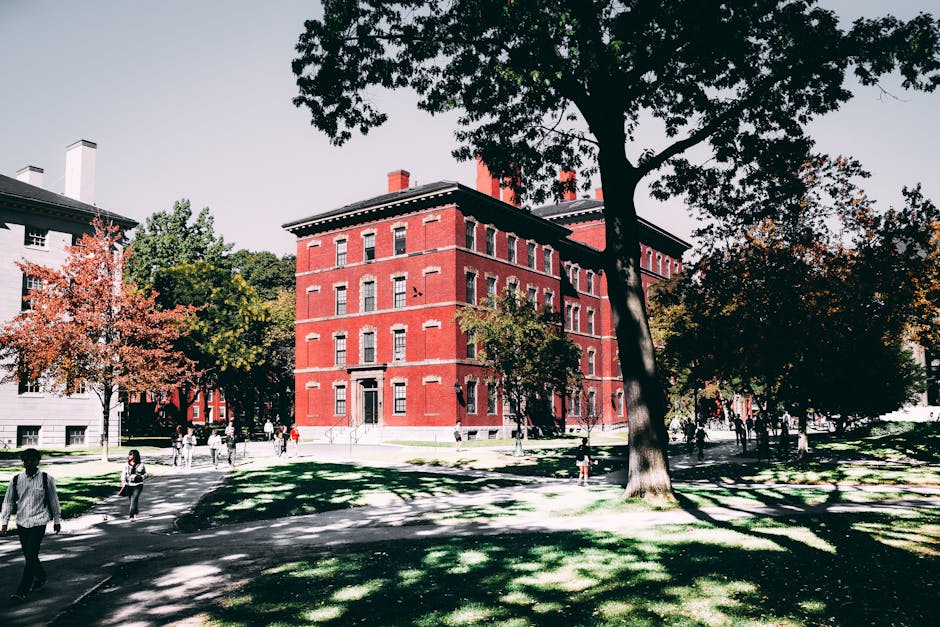
Standing proudly since 1919, Firestone Park Elementary isn't just a school—it's the beating heart of its neighborhood. When you walk past its stately brick façade, you're looking at more than a building; you're seeing a century of community memories, childhood lessons, and neighborhood identity.
"This is such a historic neighborhood, and a historic school," shared a 34-year resident during the December community meeting, her voice carrying the weight of generations. "It's part of who we are."
The school's roots run deep in Akron's industrial heritage. Harvey Firestone himself—yes, that Firestone of tire fame—specifically deeded this land for education. He didn't just build a tire empire; he helped build a community with education at its core. The school bears distinctive architectural touches that speak to a time when public buildings were crafted with extraordinary care and craftsmanship that would break most modern budgets.
As redistricting discussions have intensified within the My search cluster STALA, the preservation question has become increasingly emotional. Many residents worry about the building's fate if students no longer fill its hallways.
"We're concerned about vandalism and those in the community that may not mean well," one neighbor explained during the December meeting, expressing what many feel—fear that an empty historic building might become a target rather than a treasure.
District leaders acknowledge these concerns while gently pointing to practical realities. As one representative put it, "I love the building, it's a beautiful building. It's aged in terms of the years that it's been standing." That simple statement captures the central tension—balancing reverence for history against the needs of today's students.
The school's APS website proudly describes Firestone Park Elementary as "a school with a proud tradition of excellence." That tradition now stands at a crossroads as the district weighs historical significance against modern educational needs and limited resources.
At American Mortuary Coolers, we understand this delicate dance between preserving character and embracing progress. We regularly help funeral homes maintain their historic dignity while installing modern refrigeration systems. Whether it's a century-old funeral home or a beloved school in the My search cluster STALA, finding that balance between honoring the past and serving the future requires both sensitivity and practical solutions.
The Progress Through Preservation advocacy group has become increasingly vocal as the proposal advances, highlighting that once these historic educational landmarks are gone, they can never truly be replaced. Their concern isn't just about a building—it's about preserving the architectural and cultural heritage that makes Firestone Park unique among Akron neighborhoods.
How Redistricting Reshapes Life in the STALA Cluster
The redistricting proposal for My search cluster STALA isn't just lines on a map—it represents a fundamental shift that will touch daily life for hundreds of families. As someone who's attended several community meetings, I've seen how these changes stir deep emotions and practical concerns.
Boundary Shifts and School Closures
When the 2024-25 school year begins, several beloved community institutions will close their doors. Firestone Park Elementary, with its century of history, Pfeiffer Elementary, and both Essex and Stewart Early Learning Centers are all slated for closure.
For many families, these schools represent more than just buildings—they're where generations have learned to read, made lifelong friends, and developed community connections. As one grandmother shared at the December meeting, "My children went to Firestone Park, and now my grandchildren. Where will their children go?"
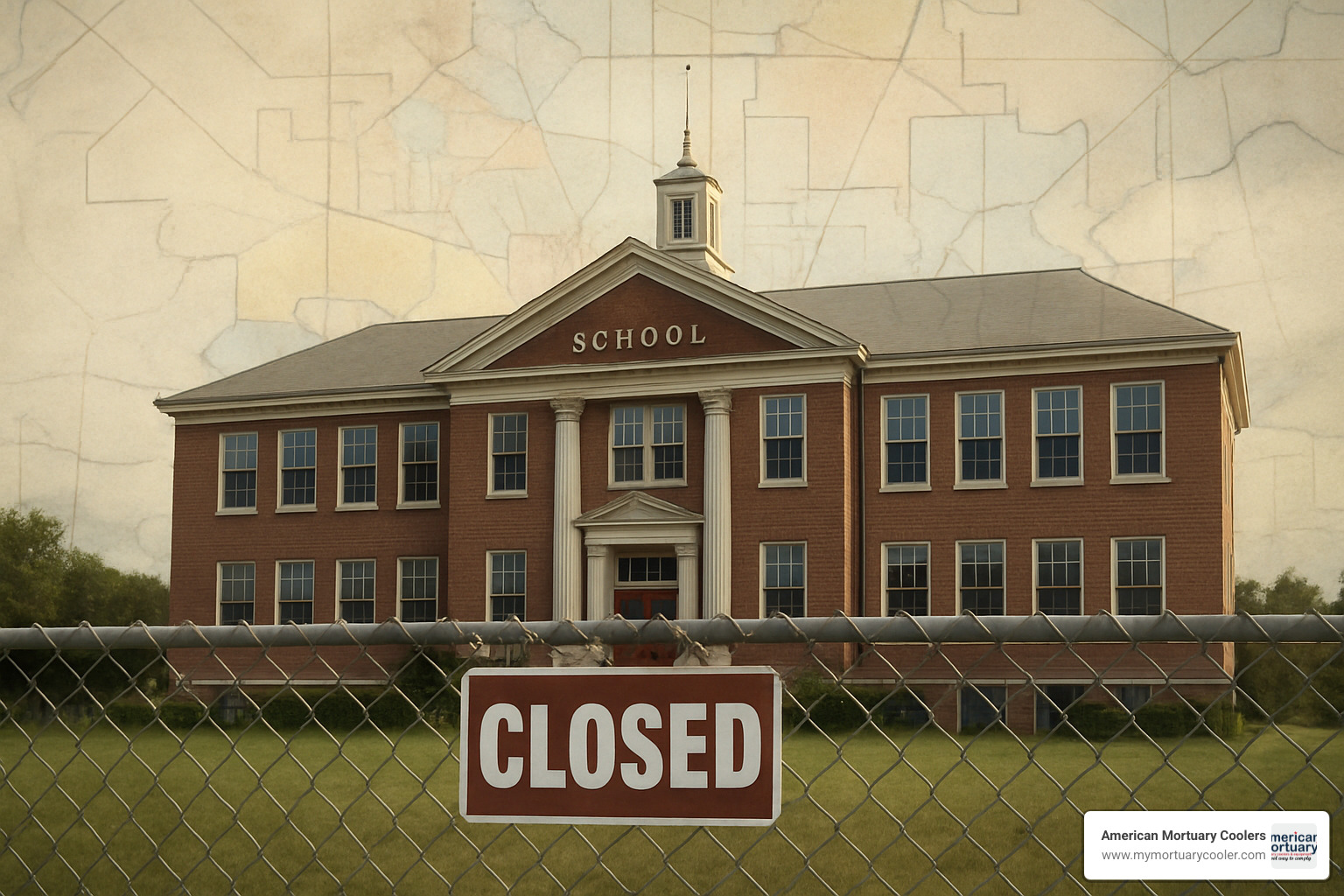
Enrollment Redistribution and Modernization Goals
"We can't keep operating schools at 60% capacity while others are bursting at the seams," Superintendent Christine Fowler Robinson explained during a recent community forum. The imbalance not only affects resource allocation but also creates inequities in educational experiences.
The redistricting aims to create more balanced enrollment while moving students into buildings with modern amenities. While older buildings like Firestone Park Elementary hold tremendous historic value, they often lack the infrastructure needed for today's educational technology. Updated facilities will offer improved safety features, better technological infrastructure, and more energy-efficient systems—important considerations for both learning outcomes and district budgets.
Transportation Considerations
"Will my first-grader have to cross Waterloo Road to get to school?" This question from a concerned parent highlights one of the most practical concerns: how will children physically get to their new schools?
The district has established a 2-mile radius as the threshold for providing bus transportation. For families with multiple children, work schedules, or limited transportation options, this detail isn't minor—it's essential for planning daily life.
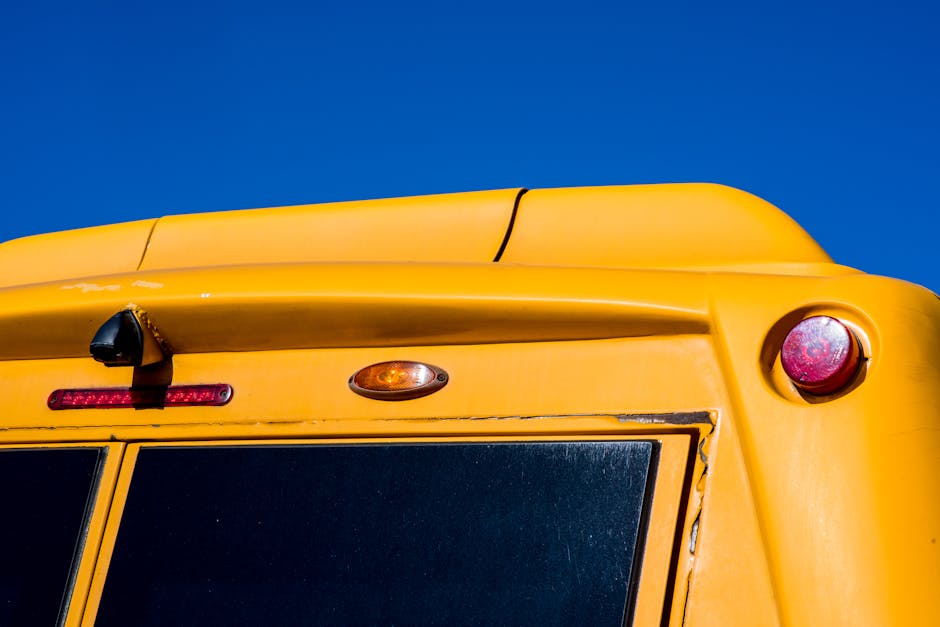
Many families in the Firestone Park area will see significant changes in their school commute. Those in southern parts of the neighborhood will travel approximately 1.7 miles further to Robinson CLC, while those in the northern section face an additional 2.1 miles to David Hill CLC. The Pfeiffer area students will travel about 1.3 miles further to reach Seiberling CLC.
At American Mortuary Coolers, we understand how critical logistics and planning are when making infrastructure changes. Just as we carefully design cooling systems to fit precisely within existing spaces, the district must thoughtfully plan student redistribution to minimize disruption.
My search cluster STALA: Student Assignments & Transportation
For families in the My search cluster STALA, navigating the reassignment process will be crucial in the coming months. Students will automatically be reassigned based on their home address and the new boundary maps, with the district communicating these assignments directly to families.
If your family prefers a different school than your assigned one, you'll need to act quickly during the open enrollment window from January 29 to February 9, 2024. This limited timeframe is your opportunity to request an alternative placement.
Transportation remains a top concern for many parents. The district will provide busing if your child's new school is more than 2 miles from home, they're in grades K-8, and they attend their assigned school rather than an open enrollment choice. The district has also indicated they'll make efforts to keep siblings together, though this isn't guaranteed in all cases.
"My son has special needs and has finally adjusted to his current school environment," shared one mother at the community meeting. "Starting over somewhere new isn't just inconvenient—it's potentially harmful to his development." For families with such specific concerns, the district recommends emailing redistrictingquestions@apslearns.org for personalized assistance.
My search cluster STALA: Educational & Social Ripple Effects
The human impact of redistricting extends far beyond logistics. Research consistently shows that school transitions can temporarily impact academic performance, which is why the district plans to implement support programs including summer orientation sessions and buddy systems to help ease the transition.
Class sizes will likely shift as students are redistributed. While the administration aims to maintain appropriate student-teacher ratios (18-22 students per class in K-3, 22-25 in grades 4-6, and 25-28 in grades 7-8), some adjustment period is inevitable.
Perhaps most poignant are the social implications. "My daughter has been with the same group of friends since kindergarten," one father noted, his voice breaking slightly. "Moving to a new school means starting over socially." The district acknowledges these concerns and plans to create opportunities for students from closing schools to meet their new classmates before the transition.
Different schools offer varying extracurricular activities based on their facilities and staff expertise. A silver lining for some students may be gaining access to previously unavailable activities, though others may lose access to programs they've come to love.
Health considerations also play an important role in these transitions. According to scientific research on school-based asthma care, school environments significantly impact student health conditions. With over 4.2 million school-aged children in the United States having asthma (leading to approximately 10 million absences yearly), the move to modern facilities with improved air quality systems and dedicated health spaces could benefit many students with health concerns.

At American Mortuary Coolers, we've seen how improved infrastructure can transform operations. Just as our cooling systems must maintain perfect reliability in critical settings, school facilities must provide environments conducive to both learning and health. When designed thoughtfully, new facilities can honor community heritage while meeting modern needs—a balance we strive for in our own work with historic funeral homes seeking modern refrigeration solutions.
Community Voices: Concerns, Questions & Opportunities to Engage
The proposed changes to My search cluster STALA have sparked passionate conversations throughout our community. From parents to teachers to longtime residents, everyone has something to say about these transformative plans.
Historic Building Security and Vandalism Fears
When it comes to beloved Firestone Park Elementary, many neighbors are deeply worried about what happens next to this century-old landmark.
"We're concerned about vandalism and those in the community that may not mean well," shared one visibly emotional resident during the December 11 meeting. "What will happen to this beautiful building that's been part of our neighborhood for over 100 years?"
You could feel the tension ease slightly when district leaders acknowledged these fears. They promised to explore partnerships with the city or other organizations to ensure the historic property remains secure, maintained, and ideally repurposed in a way that honors its legacy.
As someone who works with historic buildings regularly, I understand these concerns. Vacant buildings can quickly deteriorate without proper care – something we at American Mortuary Coolers see when helping funeral homes update their facilities while preserving their character.
Equity in Technological Resources
Parents have been vocal about ensuring their children don't lose out on learning opportunities during this transition. Many have expressed worries that students from closed schools might face disadvantages if their new schools lack equivalent technology.
Superintendent Robinson has been direct in addressing this concern: "Students need technologically advanced schools to improve learning. That's one of the driving factors behind these difficult decisions."
This balance between progress and preservation resonates with many of us. In our work at American Mortuary Coolers, we often help clients modernize their facilities while respecting tradition – a delicate balance that seems to mirror what My search cluster STALA is experiencing now.
Meeting Dates and Feedback Channels
If you're looking to make your voice heard about these changes, here are your opportunities:
- Final Public Meeting: December 14, 2023, at East Community Learning Center auditorium
- Feedback Deadline: January 7, 2024
- Email Channel: redistrictingquestions@apslearns.org
District representatives emphasized during the December 11 meeting that they're genuinely interested in thoughtful feedback. They encouraged families to provide specific suggestions rather than general opposition, noting that concrete ideas will be most helpful in refining the plan before final decisions are made.
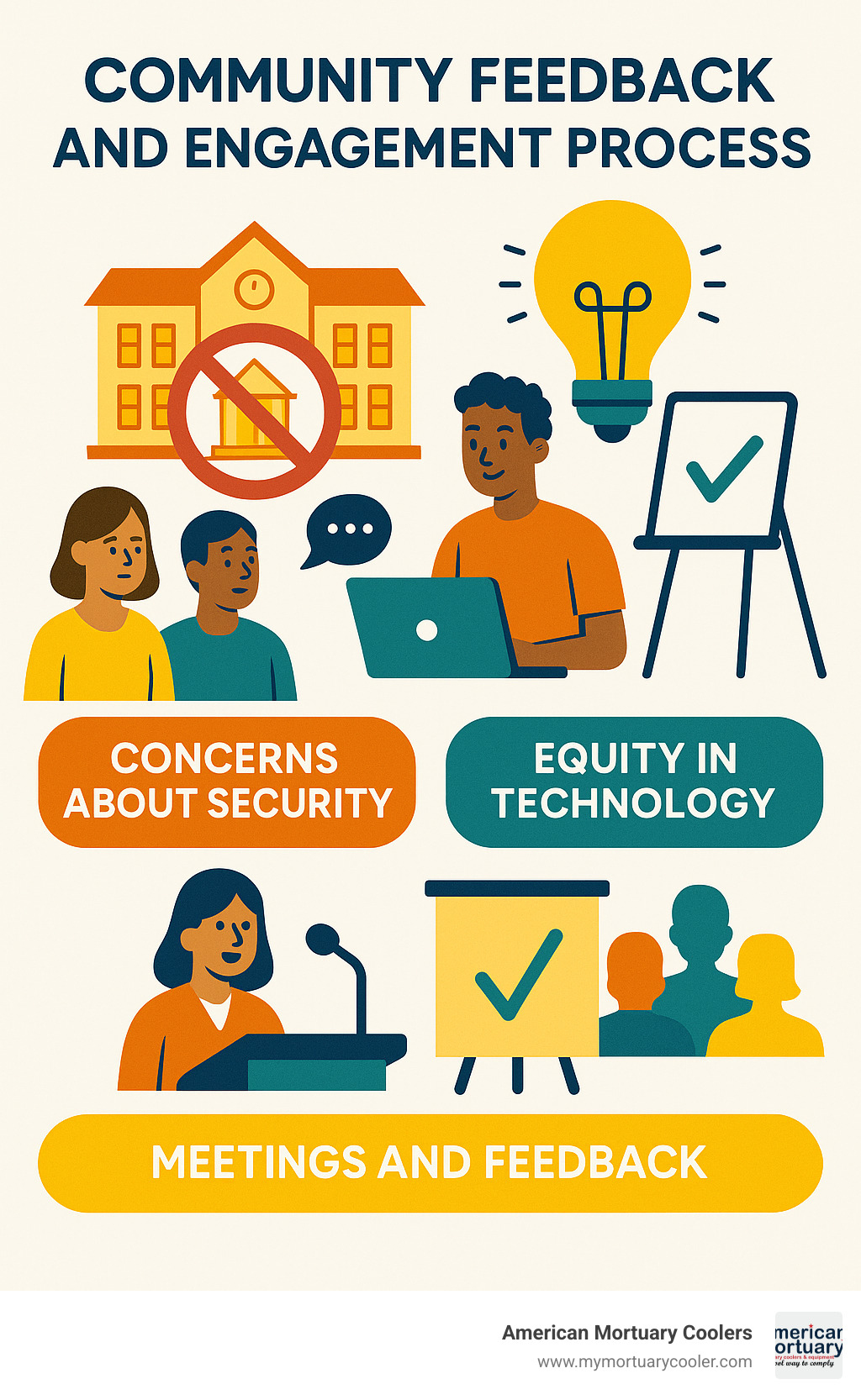
Stakeholder Partnerships
There's real potential for meaningful collaboration as these changes unfold. The district has signaled openness to partnering with various community stakeholders, especially regarding historic preservation and building repurposing. These partnerships could include the City of Akron, neighborhood associations, historical preservation organizations, community service groups, and other educational institutions.
I've seen how bringing diverse perspectives together can lead to creative solutions. When we install cooling systems in historic funeral homes, we often collaborate with preservationists, architects, and local officials to find approaches that honor history while meeting modern needs. This same multi-stakeholder approach will be crucial for My search cluster STALA as the community steers these challenging changes together.
The most successful transitions happen when everyone feels heard – something worth remembering as this process continues to unfold in our neighborhoods.
Preserving Buildings, Repurposing Spaces & Ensuring Safety
When a beloved school building like Firestone Park Elementary faces closure, it's not just about moving students—it's about preserving a piece of community history. Throughout the My search cluster STALA redistricting discussions, this concern has touched many hearts.
"I've watched my children, and now my grandchildren, walk through those doors," shared one emotional resident at the December meeting. "What happens to that beautiful building matters to all of us."
Building Mothballing
The district has been listening. For historically significant buildings like Firestone Park Elementary, they're considering a thoughtful "mothballing" approach. This isn't just abandonment—it's a careful preservation process while longer-term plans develop.
What does proper mothballing look like? It means securing all entry points against unwanted visitors. It involves maintaining minimal climate control to prevent the damage that comes from extreme temperature swings. Regular security monitoring becomes essential, and special attention goes to preserving those architectural details that make the building special.
At American Mortuary Coolers, we see this challenge regularly when installing our systems in historic buildings. Those beautiful old structures need special care—moisture can be particularly damaging, causing rapid deterioration even to seemingly solid structures. The right approach makes all the difference.
City-District Cooperation
"We're actively talking with city officials," one district representative explained during community meetings. These ongoing conversations explore several promising possibilities that could benefit everyone involved.
These discussions include potential ownership transfers to city departments that could repurpose the buildings for community use. Joint maintenance agreements could share the burden of upkeep. Historic designation might open up preservation funding that wouldn't otherwise be available. And partnerships with private entities could bring fresh ideas and resources to the table.
Potential Community Centers
The most popular suggestion from community members? Changing closed schools into vibrant community centers.
"The building doesn't have to stop serving the community just because it's no longer a school," a district representative pointed out during the December 11 meeting. This approach has worked wonderfully in other districts, where former schools now serve as senior centers, community arts spaces, nonprofit hubs, adult education facilities, and even health clinics.
Imagine walking into Firestone Park Elementary five years from now for a community art show, or to attend a senior wellness program. The building continues its century-long tradition of bringing people together, just in a new way.
Safety Patrols and Security Measures
The fear of vandalism in vacant buildings is real and valid. "We can't let these beautiful buildings become targets," one concerned neighbor stated. The district has committed to implementing several meaningful security measures to address these worries.
Their plan includes regular security patrols, modern alarm systems, and video monitoring to deter unwanted activity. They'll coordinate with local police for additional oversight and maintain exterior lighting and grounds to prevent the "abandoned" appearance that often attracts trouble.
Funding Implications
Let's talk about the elephant in the room—money. The district has been transparent that maintaining unused buildings pulls resources away from educational programs. However, they've also acknowledged the cultural and historical value these buildings represent to the community.
To bridge this gap, they're exploring alternative funding sources including historic preservation grants, community development block grants, public-private partnerships, and foundation support. These approaches could help preserve these architectural treasures without burdening the educational budget.
From our work at American Mortuary Coolers, installing specialized refrigeration systems in buildings of all ages across the Midwest and beyond, we've seen communities find creative solutions to these challenges. With thoughtful planning and the right investments, these historic structures can adapt to serve new purposes while preserving the architectural character that makes them special.
The story of My search cluster STALA's historic buildings doesn't have to end with redistricting—it can begin an exciting new chapter of community service and preservation.
Frequently Asked Questions about the STALA Cluster
What exactly qualifies a school for inclusion in the STALA cluster?
The STALA cluster—short for South Tallmadge Akron Learning Area—is primarily a geographic designation within Akron Public Schools. When you hear about My search cluster STALA, we're talking about schools located in the South Tallmadge neighborhood of Akron.
Currently, this cluster includes beloved community schools like Firestone Park Elementary and Pfeiffer Elementary, along with portions of Essex and Stewart Early Learning Centers. These schools weren't randomly grouped together—they form a thoughtful educational pathway for children in this specific neighborhood.
Think of school clusters like extended families. They help the district coordinate resources, align curriculum across grade levels, and create smooth transitions as students move from elementary to middle and high schools. Just like families sometimes move or reorganize, cluster boundaries can change during redistricting—which is exactly what's happening now.
Will my child get bus service after reassignment?
This is perhaps the most practical concern for many families in the My search cluster STALA area, and understandably so!
The transportation question comes down to three main factors: distance, grade level, and school choice. If your child's new assigned school is more than 2 miles from your home, the district will provide bus service. This applies primarily to students in grades K-8, as high schoolers typically don't receive district transportation.
One important note: transportation is generally only provided to your assigned school. If you opt for a different school through open enrollment, you'll likely need to handle transportation yourself.
As one district representative empathetically explained during the December 11 meeting: "We understand transportation is a critical concern for families. If your child is reassigned to a school more than 2 miles away, we will provide busing. If you have specific concerns about your situation, please email us directly."
Every family's situation is unique, especially in the My search cluster STALA area where some neighborhoods have particular transportation challenges. The district encourages reaching out to redistrictingquestions@apslearns.org with your specific questions.
How will closed buildings be protected from vandalism?
This concern surfaced repeatedly during community meetings, especially regarding historic treasures like the century-old Firestone Park Elementary. Parents and neighbors alike worry about what might happen to these beloved buildings once they're no longer filled with the daily bustle of students and staff.
The district has developed a thoughtful, multi-layered approach to protect these important community assets:
First, they'll focus on physical security—improving locks, securing windows where needed, and reinforcing entry points. They'll complement this with active monitoring through regular security patrols and electronic surveillance. The grounds will continue to receive regular maintenance to prevent the abandoned appearance that often attracts vandalism.
Perhaps most importantly, they're fostering community partnerships with neighborhood watch groups and local police to ensure these buildings remain under watchful eyes. And rather than leaving buildings in limbo, they're actively exploring long-term repurposing options.
"We're concerned about vandalism too," one district representative shared during a community meeting. "These buildings represent significant investments and community heritage. We're committed to protecting them while we determine their future use."
At American Mortuary Coolers, we understand the importance of securing valuable infrastructure. In our work installing custom cooling systems in funeral homes across the country, we always consider both immediate security and long-term durability. The district is taking a similar approach with these beloved school buildings—protecting their immediate future while thoughtfully planning for sustainable long-term use.
Conclusion
The redistricting of the My search cluster STALA represents a pivotal moment for Akron Public Schools and the communities it serves. As we've explored throughout this guide, the changes involve complex trade-offs between educational modernization, resource allocation, historical preservation, and community identity.
For families directly affected by these changes, the coming months will require careful navigation of new school assignments, transportation arrangements, and potential open enrollment decisions. The district has provided channels for feedback and questions, with the January 7, 2024 deadline approaching rapidly.
The story of Firestone Park Elementary—a century-old institution built on land donated by Harvey Firestone himself—reminds us that schools are more than just buildings; they're repositories of community memory and identity. At the same time, the district's emphasis on technological advancement and equitable resources highlights the evolving needs of education in the 21st century.
At American Mortuary Coolers, we specialize in creating durable, custom solutions for clients across the contiguous 48 states from our Tennessee base. While our expertise is in mortuary refrigeration systems rather than education, we understand the importance of balancing tradition with innovation, and of creating infrastructure that serves community needs reliably for decades to come.
The resolution of the My search cluster STALA redistricting will require continued dialogue, creative problem-solving, and community engagement. By participating in this process, residents have the opportunity to shape not just the future of their local schools, but the character of their neighborhoods for generations to come.
For more information about durable infrastructure solutions beyond education spaces, explore our resources for insights applicable across various community facilities.


















